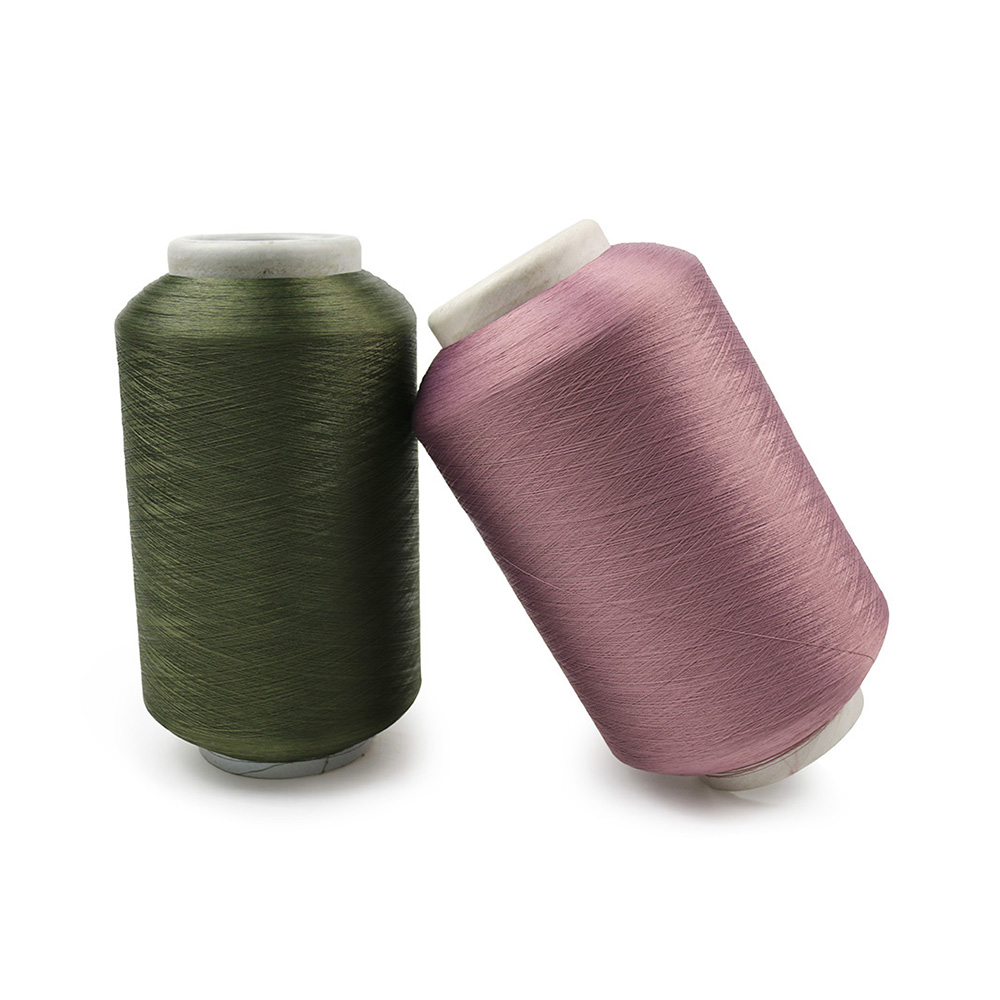If you are interested in some of our products, please feel free to visit our website or contact us for detailed information.

The coefficient of friction in mechanical covered yarn plays a crucial role in determining its suitability for specific end-use applications, such as textiles or industrial products. Here's how it contributes:
Weaving and Knitting Efficiency: The efficiency of weaving and knitting processes hinges on the meticulous control of the coefficient of friction in mechanical covered yarn. This attribute is foundational to the seamless integration of the yarn into high-speed textile machinery. By minimizing snags and breakages, manufacturers can uphold uninterrupted production, reducing downtime and optimizing overall operational efficiency. The precision in managing friction characteristics becomes particularly critical in industries where production speed is a paramount factor in meeting market demands.
Ease of Handling: The low coefficient of friction inherent in mechanical covered yarn is a linchpin for the fluidity and ease of handling throughout the textile manufacturing process. This property translates into a yarn that smoothly navigates intricate machinery, mitigating the risk of entanglements and jams. The consequential benefits for manufacturers are multifold, ranging from enhanced productivity to a reduction in material wastage. In essence, the yarn's ease of handling becomes a pivotal factor in streamlining production workflows and ensuring cost-effective manufacturing.
Fabric Surface Characteristics: The coefficient of friction serves as an artisan in shaping the sensory experience of textiles derived from mechanical covered yarn. A nuanced balance in friction levels is essential for dictating the handfeel, drape, and overall aesthetic appeal of the final fabric. This meticulous control is particularly imperative in the fashion and apparel industries, where consumer satisfaction is intricately tied to the tactile and visual attributes of the end product. The yarn, acting as a canvas for fabric creation, contributes significantly to the marketability and desirability of the resulting textiles.
Anti-Pilling Properties: Beyond the surface, the coefficient of friction assumes a defensive role in preserving the integrity of fabrics against the common nemesis of pilling. By minimizing the abrasive interaction between fibers, mechanical covered yarn showcases enhanced resistance to pilling. This characteristic not only ensures the longevity of the textile but also elevates its visual appeal by maintaining a smooth surface. In essence, the yarn becomes a guardian of quality, delivering textiles that stand resilient against the forces of wear and tear.
Wear Resistance in Industrial Products: In the realm of industrial applications, mechanical covered yarn emerges as a stalwart player in the creation of wear-resistant products. The optimization of the coefficient of friction becomes a strategic maneuver to fortify the yarn against the relentless forces encountered in applications such as conveyor belts, hoses, or industrial fabrics. Here, the yarn's ability to withstand abrasion and maintain its structural integrity under duress becomes synonymous with reliability and longevity, translating into enhanced performance in demanding industrial environments.
Grip and Traction: The coefficient of friction becomes a critical determinant in applications where mechanical covered yarn is called upon to provide secure grip and traction. Whether in the form of ropes or cords used in industrial settings, this characteristic ensures that the yarn's interaction with surfaces is characterized by stability, preventing undesirable slippage. The yarn, in this context, transforms into a facilitator of safety, offering a dependable grip that is fundamental to the effectiveness of products designed for secure handling.
Mechanical covered yarn (SCY)

Mechanical covered yarn (SCY)


 English
English Español
Español








